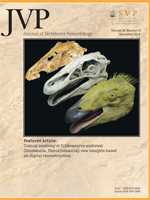Fossil remains of at least seven individuals of a new species of Aegypius vulture from the Upper Varswater Formation at Langebaanweg, South Africa (early Pliocene), represent the earliest, unequivocal, and most substantial evidence for crown-group Aegypiinae in the world. Evaluation of available data on previously described vulture species from the Miocene of Africa and China such as Gansugyps linxiaensis, Mioaegypius gui, and Qiluornis taishanensis indicate that the corresponding fossils either lack any diagnostic characters of aegypiine vultures or are referable to the stem lineage of Aegypiinae. Aegypiine vultures, nevertheless, might be of Asian origin, and the extension of the range of this taxon into Africa south of the Sahara might be correlated with the spread of gregarious herbivores such as bovids and equids from Eurasia to Africa during the Miocene. The holotype of the new vulture species, an associated partial skeleton with elements of the pectoral girdle, the wing, and the hind limb preserved, is comparable in size to smaller individuals of A. monachus and A. tracheliotos. Evidence for an Aegypius vulture at Langebaanweg further indicates that open woodlands were an important component of the early Pliocene paleoenvironments at this particular site.
How to translate text using browser tools
1 November 2014
A New Species of Aegypius Vulture (Aegypiinae, Accipitridae) from the Early Pliocene of South Africa
Albrecht Manegold,
Marco Pavia,
Pippa Haarhoff
ACCESS THE FULL ARTICLE





